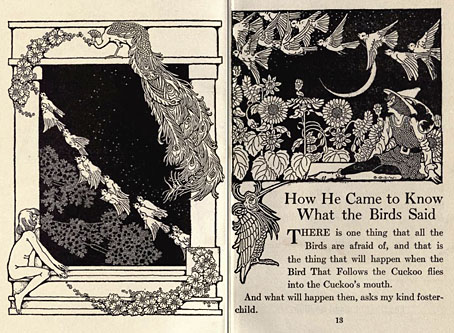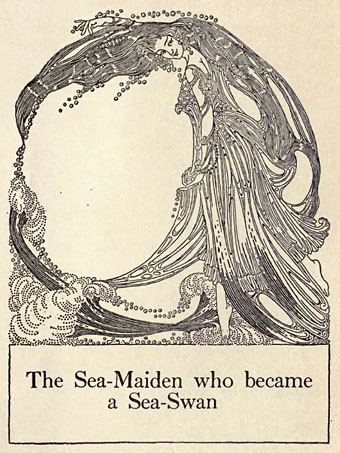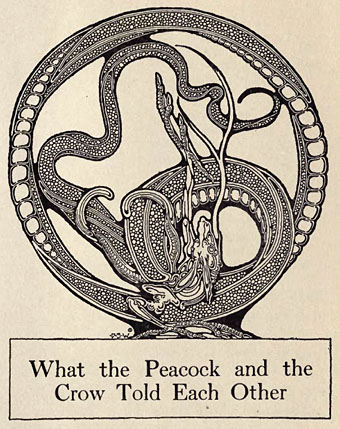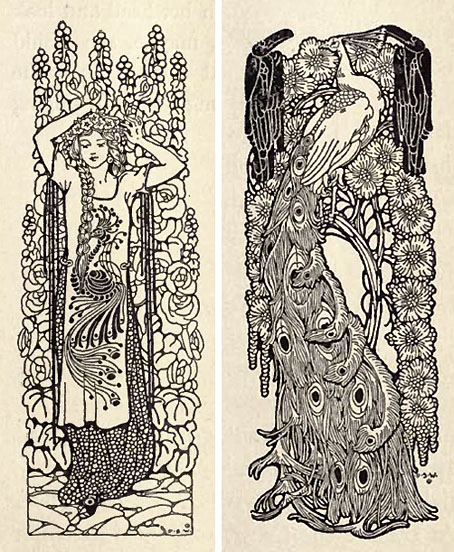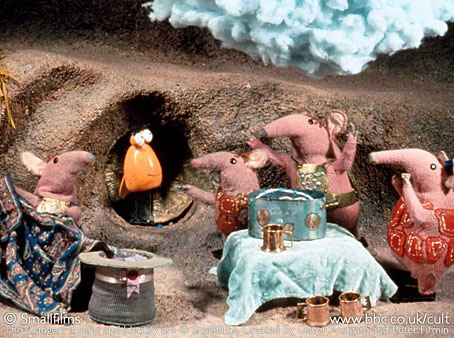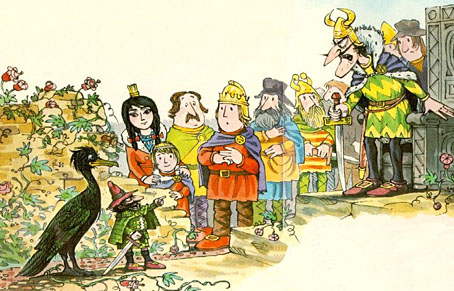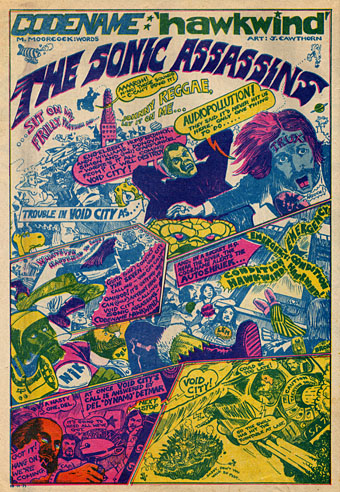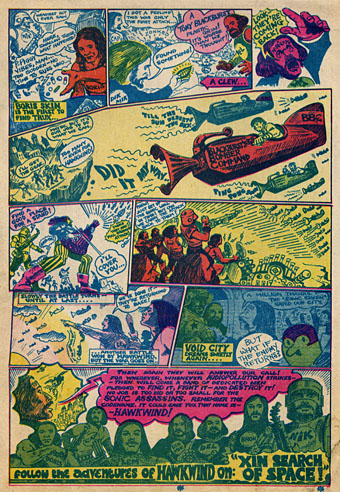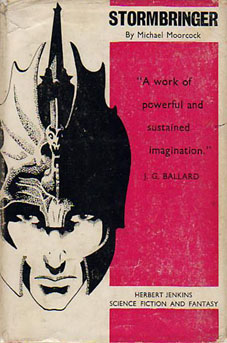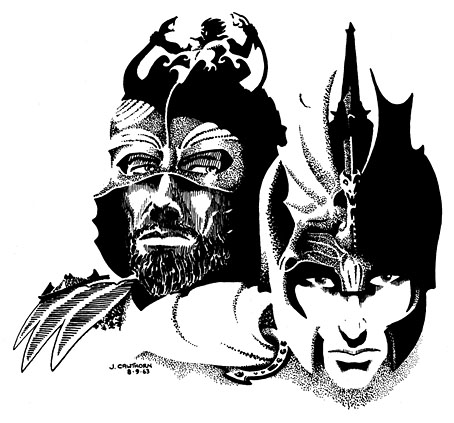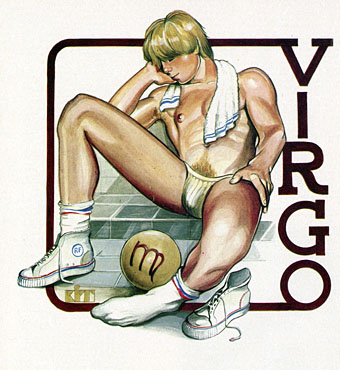A posting of Dugald Stewart Walker’s work this week at the always excellent Golden Age Comic Book Stories sent me back again to the Internet Archive to see if there might be further examples among their collection of scanned library books. Sure enough there’s not only a copy of the book which GACBS sampled from, Padraic Colum’s The Girl Who Sat By The Ashes, but also other fairy tale collections by Colum, including the one featured here, The Boy Who Knew What the Birds Said (1918). Colum is well-represented in the Internet Archive’s American Library section and many of his titles seem to be at least partly illustrated. A cursory glance at some of the others turned up his retelling of Greek myths illustrated by Willy Pogány.
I’m not as keen on Walker’s work as I am other artists of this period—he has a tendency to give his adult characters gnome-like features—but the line work and compositions are first class. The Boy Who Knew What the Birds Said is especially nice for its many peacock details, some of which are featured below.
left: Bloom-of-Youth and the Witch of the Elders; right: What the Peacock and the Crow Told Each Other.
Elsewhere on { feuilleton }
• The illustrators archive
Previously on { feuilleton }
• Peacocks
• Willy Pogány’s Parsifal

